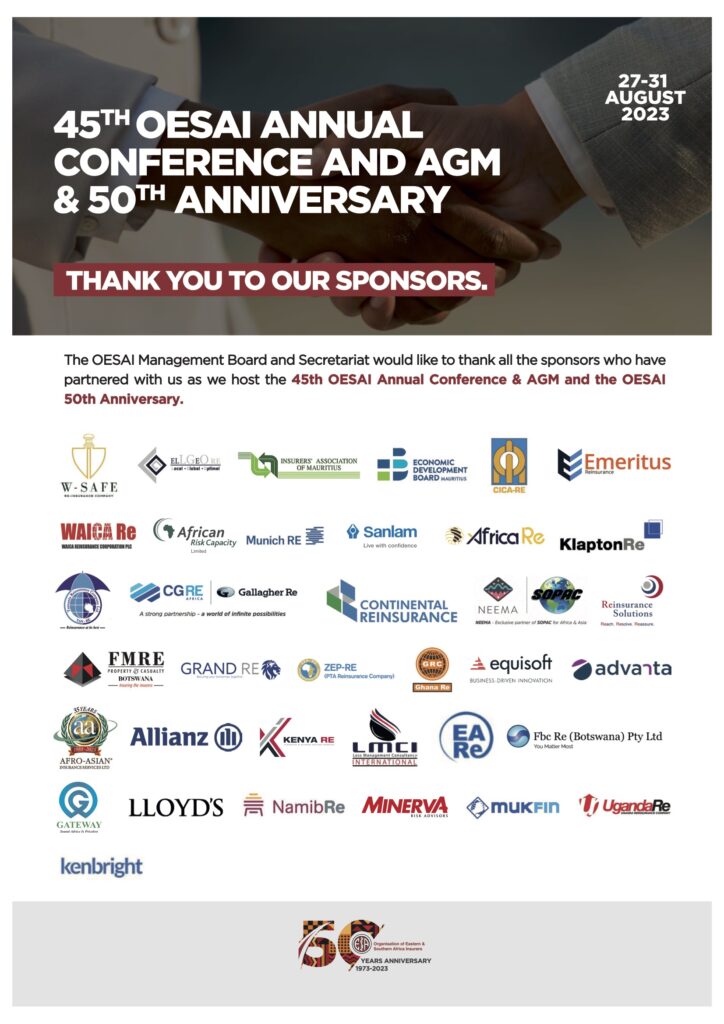Charles Nakhoze, past Chairperson of OESAI (Organisation of Eastern and Southern African Insurers), currently heading up Kingsbridge Reinsurance Solutions.

Looking at insurance over a lengthy period I see remarkably interesting developments in insurance across Africa. The insurance business is linked to economic development, and as most African countries are growing or posting some development, the need for insurance increases. We are also seeing a huge appetite for new risk covers, like the issue of cybercrime and climate related risks.
To lift most of their people out of poverty, governments are increasingly getting involved in agriculture, business, subsidised agriculture, and insurance. We have even seen quite a lot of collaboration between African countries in the sense of seeking capacity and looking at ways of spreading risks across the continent.
However, most African insurance companies will suffer from a small balance sheet, so the bulk of what we do is passed on, while the African reinsurers also have certain limitations regarding risks like mining, oil and gas, and even the agricultural related risks. So, you find that even when laws around Africa have been crafted to ensure that we retain as much as possible risk to cut down on the capital and Forex outflow, it still becomes difficult because we do not have much capacity for certain risks. As a result, we are still going out of Africa to reinsure.
Cross-border collaboration – Collaboration could positively influence growth in insurance penetration across the continent. The COMESA Yellow card, providing minimum third-party cover to motorists across about 20 African countries, is a fitting example of collaboration. Countries came together to agree on this instrument. Using this to gauge collaboration, collaboration can work in Africa.
This is an example of the placement of risks in such a way that it benefits most African countries to cut down on how much foreign exchange we export through reinsurance to the Western world and other places. There is a need for these collaborations, to control the outflow of resources. It also means that our own capacities are expanded to take on a bit more of the risks because you know that you can place the risks within our sub-region.
Furthermore, this is also a good training ground for our people in the insurance industry because they are looking at risks that are more complicated and then seeing how they are underwritten, and how the spreading of this risk is done within Africa.

Collaboration is key and it can work, but all the drivers of this collaboration must be able to demonstrate that it is a win-win situation for all parties. That is when you see people respond. When they see that they can benefit, whether it is by increasing their bottom lines, by training their people or by increasing their capacities.
The role of OESAI – One would say immediately that the mantra is already there, just by looking at the OESAI website and all the collaborations already ongoing. It is now a question of looking at what kind of networking we want, that benefits people. It should not be about just attending conferences, but coming back to your desk as a better underwriter than you were before you went to the conference.
We need to be training people, giving them tools that they will use when they get back to the office. Our training therefore should be more practical, and I think that we should tie to CPD (Continuous Professional Development) points. This allows them to be able to demonstrate, when they come from this networking seminars, that they are slightly more proficient than before they went to that sponsored seminar or conference.
The rules of the game are already there, and it is just a question of changing it in such a way that we now need to see value being practically added to our people when they go back to their offices.

